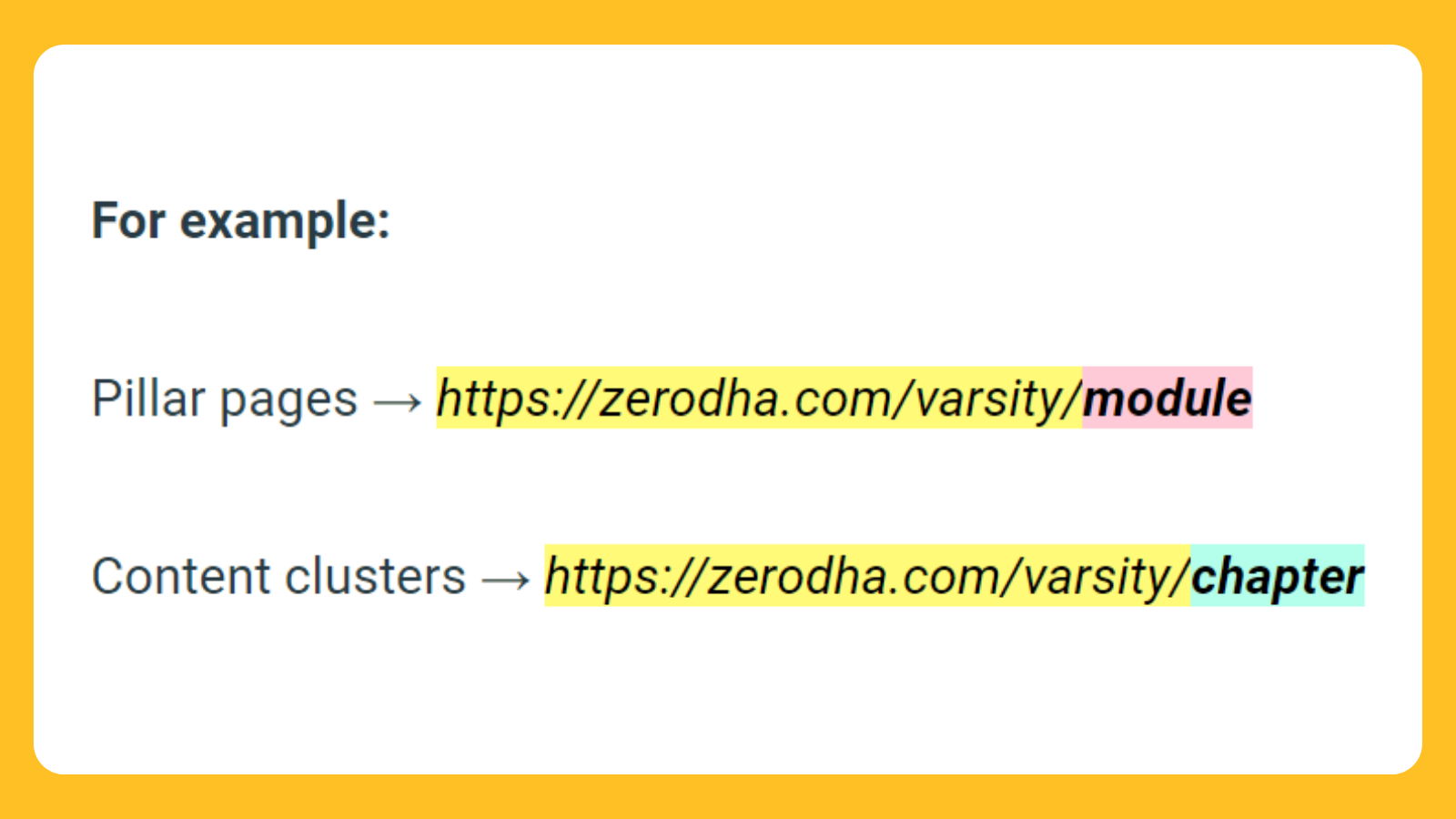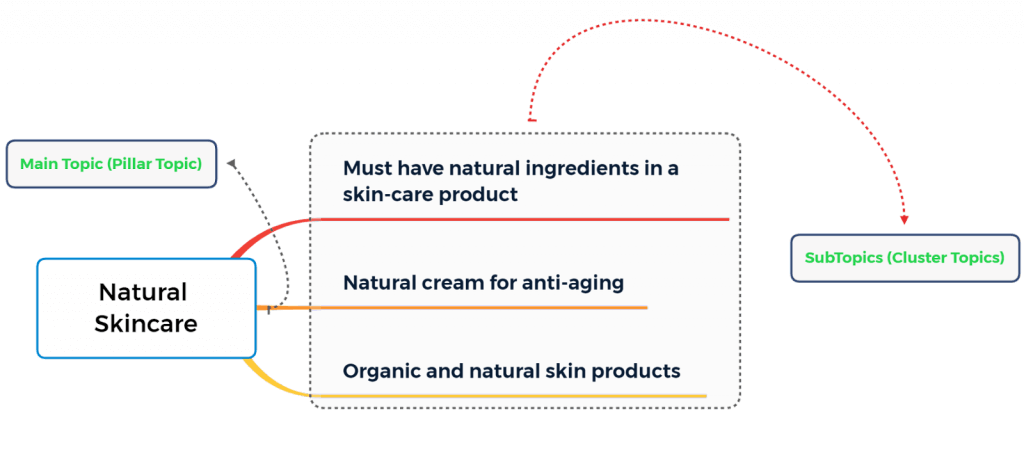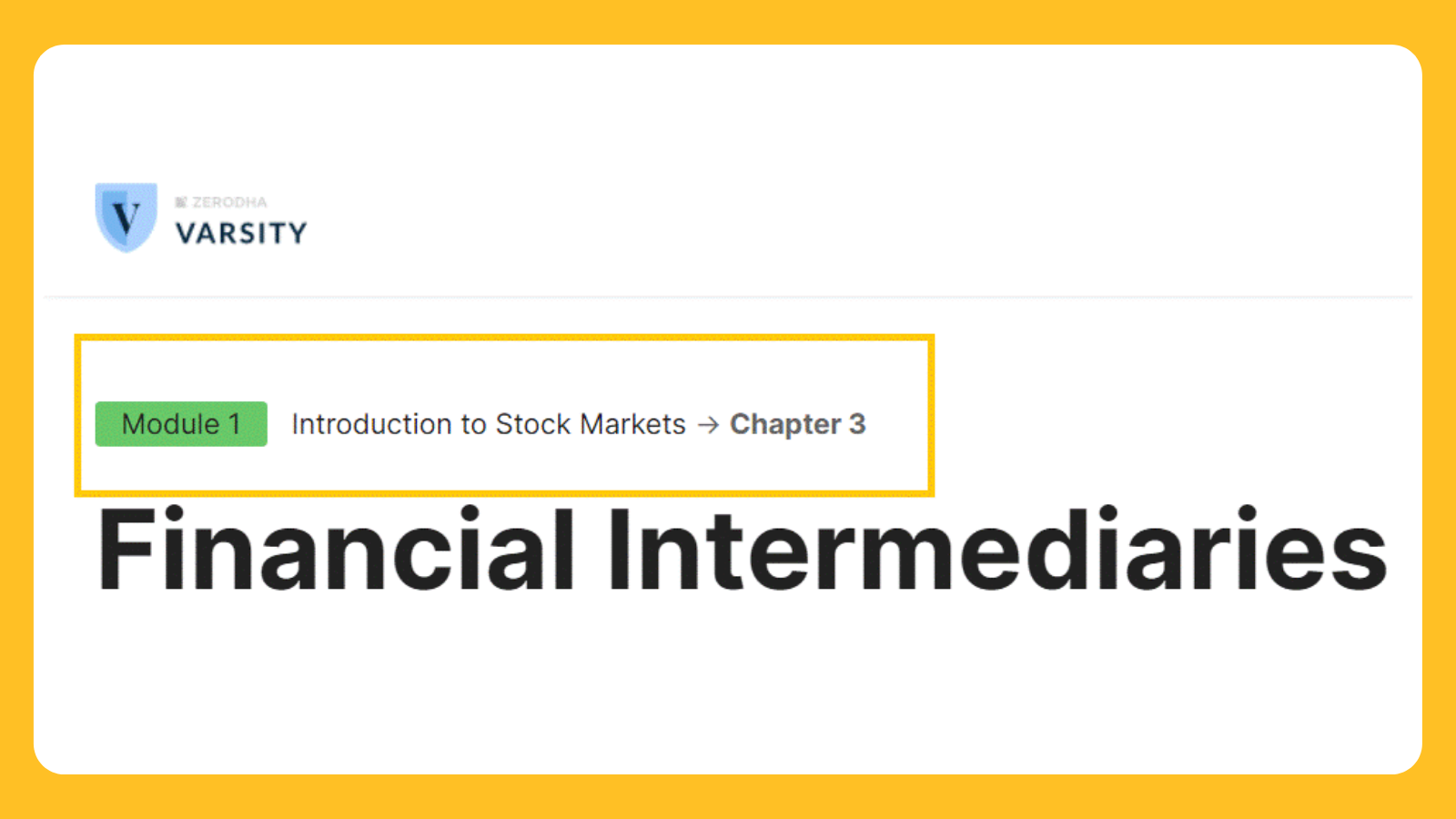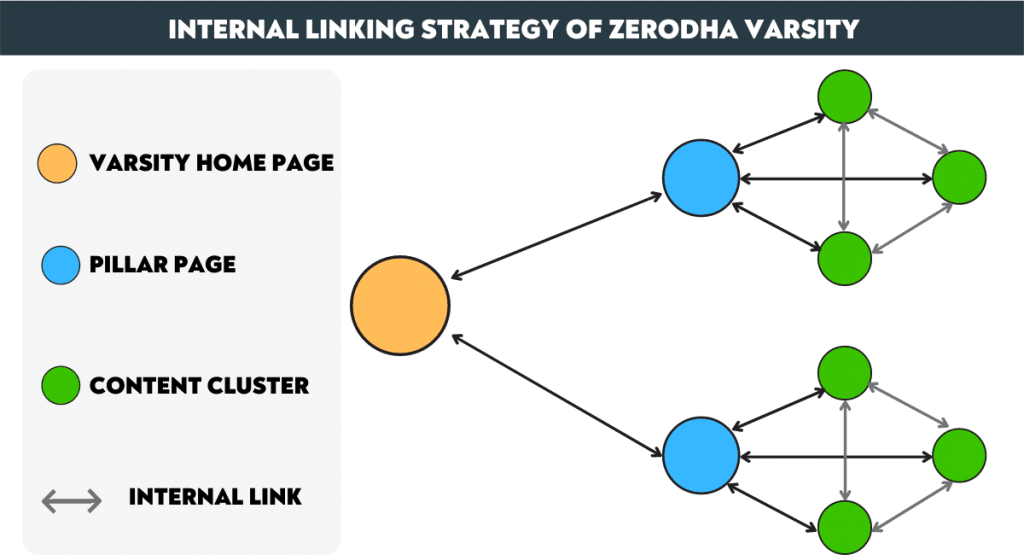About The Business:
Zerodha is the largest stock brokerage firm in India, with over 6 million clients. The company was founded in 2010 and now dominates the search results for the stock market and investing-related queries in India.

Results Achieved:
Zerodha launched Varsity, a platform dedicated to providing stock market and financial education.

Currently, the subdomain https://zerodha.com/varsity is getting over 224k site traffic per month.
Also, the content hub has generated 72.3k backlinks from 1.41k different domains.

Why Do They Work?
1. Content organization →
Let’s start with the content structure of Varsity.
Zerodha has strategically structured the URLs to organize 11 pillar pages and 760+ blog posts on different topics. The first thing you’ll notice is that these pillar pages and content clusters are under different sub-folder to create a structured and organized content hub.
For example:

Pillar pages → https://zerodha.com/varsity/module
Content clusters → https://zerodha.com/varsity/chapter
This helps the users and the crawlers to understand the structure and important pages of the site.
Here’s the visualization of the content structure:

2. Content in Regional language →
Not only in English, but Zerodha has also focused on creating content in Hindi.

The benefits?
- Less competition
- Lack of Hindi content on financial education from credible sources
- Long-tail-keywords
- Comparatively easy to rank higher
Look at the below results:
The Hindi keywords (Mutual fund return and types of chart) have less competition and are also relevant to the business offerings.

In fact, 6 out of 11 content hubs in Zerodha Varsity are in the Hindi language.

This is a smart way of competing in a high-competitive niche.
3. Building SEO optimized pillar page →
If you’re unfamiliar with topic clusters and pillar pages, here’s the brief overview:
A pillar page is a type of web page that covers a broad topic relevant to your business. And, the pillar page also links out to topic clusters.
Here’s an example of pillar page and topic clusters:

The goal of the pillar page and the topic cluster is to build topical authority and rank higher on competitive, broad keywords.
This also provides a great user experience as the reader will get all the relevant information from your website.
But here’s a catch.
Not all pillar pages have to be long-form content. In fact, pillar pages of Zerodha Varsity are the opposite.
Instead of creating a giant page on a specific topic, they have added a short description of each topic cluster.

We call this resource pillar page. And it still works in many cases.
For example, the pillar page on ‘Introduction to stock markets’ is getting 3,900 visits per month and backlinks from 44 different domains.
4. Internal linking →
Internal linking is one of the most underrated ways to boost website performance. And Zerodha Varsity has done a great job.
The first thing you’ll see is the use of breadcrumbs for content clusters.
For example, breadcrumbs help to add internal links between the pillar page and topic clusters.

This way, the link juice will transfer the high authority pages to the low authority ones.
To take it to the next level, every content cluster is connected with each other.
Here’s how:

Overall, if we try to visualize the internal linking structure of Varsity, we’ll see that every content cluster page and the respective pillar page are linked with each other.
The internal linking strategy of Zerodha Varsity looks like this:

Key Takeaways
- For a content-heavy website, organizing content and web pages by using subfolders is good for users and SEO as well.
- Instead of randomly publishing blog posts, try to categorize your blog content into broad topics or modules. This way, users can easily navigate the website even if you have a large website.
- Topic clusters and pillar page concepts are a great place to start with. To get better results, focus on strategic internal linking for each pillar page.
- You don’t always have to compete on English language-based content. Look for opportunities in regional content. Mostly, you’ll find a targeted audience and low competition.
